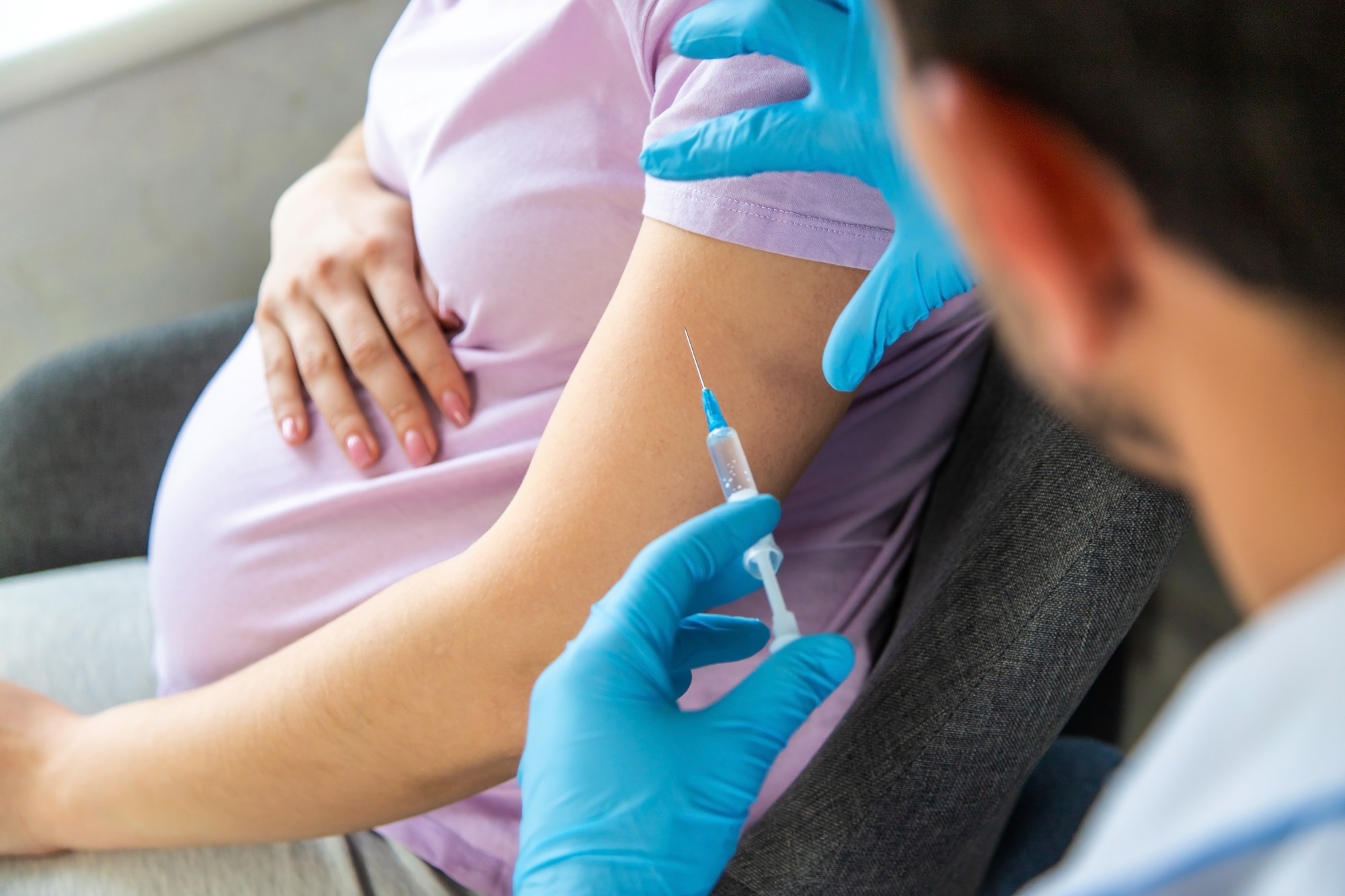A landmark German study finds that mRNA COVID-19 vaccination during the first trimester does not increase the risk of major congenital disabilities, offering crucial reassurance for expectant parents and healthcare providers.
 Study: First trimester mRNA COVID-19 vaccination and risk of congenital malformation: a prospective observational embryotox cohort study. Image Credit: Anuta23 / Shutterstock
Study: First trimester mRNA COVID-19 vaccination and risk of congenital malformation: a prospective observational embryotox cohort study. Image Credit: Anuta23 / Shutterstock
In a recent study published in Clinical Microbiology and Infection, a group of researchers evaluated the association between maternal first-trimester messenger ribonucleic acid (mRNA) coronavirus disease 2019 (COVID-19) vaccination and the risk of congenital malformations.
Background
Can a vaccine designed to protect against COVID-19 pose risks during early pregnancy? As the pandemic surged, mRNA vaccines were rapidly deployed, but vaccination for pregnant individuals was not initially recommended due to insufficient safety data. The first trimester is a critical window of fetal development, when exposure to potential teratogens can lead to major congenital anomalies. Given the urgency of pandemic reduction and the widespread uptake of vaccines, it is vital to ensure their safety in vulnerable populations, including pregnant individuals. Further research is needed to assess potential associations between first-trimester vaccination and fetal development outcomes.
About the study
This prospective observational cohort study was conducted by the Embryotox Centre of Clinical Teratology and Drug Safety in Pregnancy, in collaboration with the Paul-Ehrlich-Institut, the German Federal Institute for Vaccines and Biomedicines. Pregnant women who contacted Embryotox between January 2021 and October 2022 for individual counselling were included if they had received at least one mRNA COVID-19 vaccine dose between gestational weeks 2+0 and 12+6. Their data were compared to a cohort of unvaccinated pregnant women from the same period, identified using identical methods.
Information was collected through structured questionnaires during initial contact and again approximately eight weeks after the expected delivery date. Data included maternal demographics, medication use, pregnancy outcomes, and neonatal characteristics. The presence of congenital malformations was coded using the International Classification of Diseases, 10th Revision (ICD-10) and classified by two blinded experts according to European Surveillance of Congenital Anomalies (EUROCAT) standards. Statistical analyses were performed using multivariable logistic regression, with missing values addressed via multiple imputation. Ethics approval was granted by the Charité Ethics Committee, and the study was registered with the German Clinical Trials Register and the World Health Organization International Clinical Trials Registry Platform.
Study results
The exposed group comprised 1,828 pregnant women who received mRNA COVID-19 vaccination in the first trimester, including 1,518 who received Comirnaty® (Pfizer-BioNTech) and 308 who received Spikevax® (Moderna). The unexposed comparison group included 1,955 women. After follow-up, 1,762 exposed and 1,717 unexposed pregnancies had complete outcome data.
Major congenital malformations were identified in 68 infants (3.86%) from the exposed group and in 53 infants (3.09%) from the comparison group, with the paper noting that both of these rates are within the expected range for the German population. The adjusted odds ratio for the overall rate of major congenital disabilities was 1.30 with a 95% confidence interval of 0.90–1.86, indicating no statistically significant increase in risk. Sensitivity analyses yielded similar results, with odds ratios ranging from 1.19 to 1.41, all of which remained statistically nonsignificant.
The most frequently affected system was the cardiovascular system. In the vaccinated cohort, 32 cases (1.82%) involved congenital heart defects, compared to 15 cases (0.87%) in the comparison cohort. Ventricular septal defects were the most common, with 18 cases in the exposed group and 7 cases in the unexposed group. In six of the exposed cases, vaccination occurred after the 11th gestational week, beyond the period when the fetal heart septum forms, arguing against causality. Patent ductus arteriosus, which is classified as a major anomaly if it persists in term infants, was noted in three vaccinated and one unvaccinated infant.
Renal and urinary tract anomalies were reported in 16 vaccinated versus 8 unvaccinated infants, driven primarily by cases of duplex kidneys and ureteral dilation. No clear clustering or pattern was suggested that indicated a causal link to vaccination.
Retrospective reports of 73 cases were also analyzed; 8 showed varied major anomalies without a consistent pattern. Neonatal characteristics, including birth weight, head circumference, and gestational age, were comparable across the groups. Preterm births occurred in 3.9% of vaccinated and 7.5% of unvaccinated cases. Rates of small-for-gestational-age infants were 7.29% in the vaccinated group and 9.09% in the comparison group.
Potential biases, including differences in health-seeking behavior and access to ultrasound, were considered. Vaccinated women may have undergone more detailed screening, potentially increasing anomaly detection, a factor known as detection bias. Limitations included a potential selection bias due to the voluntary reporting procedure, incomplete data on education and pregnancy attitude, and unknown COVID-19 infection status during pregnancy.
Conclusions
To summarize, this prospective cohort study found no statistically significant increase in the risk of major congenital malformations following mRNA COVID-19 vaccination during the first trimester of pregnancy. While slightly higher rates of congenital heart and urinary tract anomalies were observed in the vaccinated group, no consistent or biologically plausible patterns emerged. These findings provide reassurance about the safety of COVID-19 vaccination during early pregnancy but highlight the need for continued monitoring.
The study authors note that while their findings are reassuring, possible associations with specific congenital disabilities cannot be ruled out, and that if vaccination is considered for women of reproductive age, it should preferably be offered before conception or after the first trimester. Future research should focus on larger cohorts, specific types of defects, and underlying risk factors to further strengthen guidance on vaccination during pregnancy.